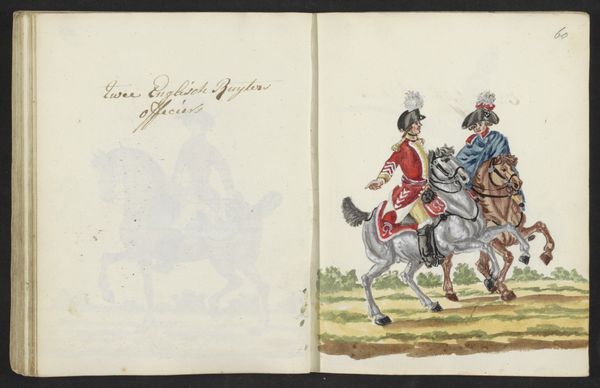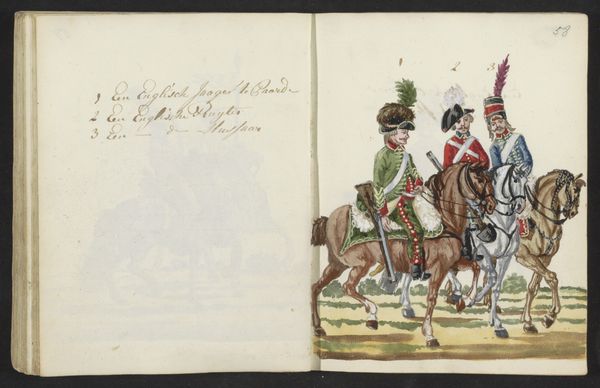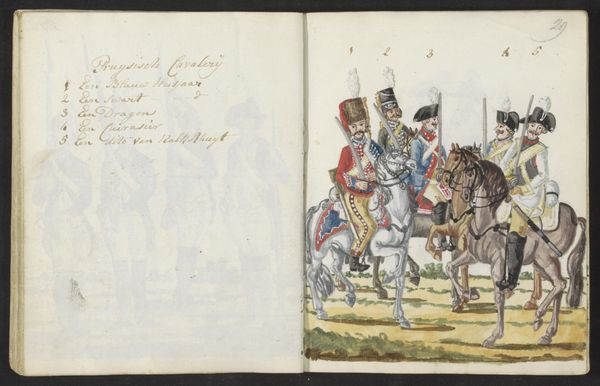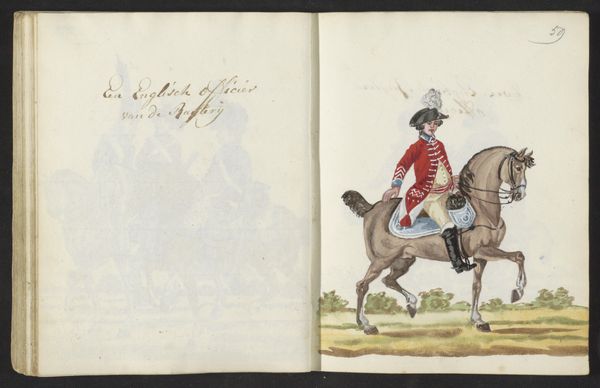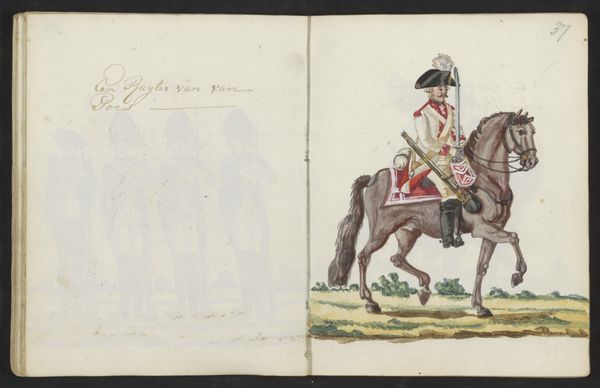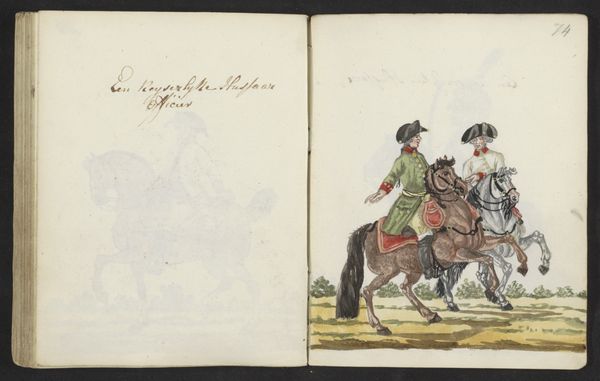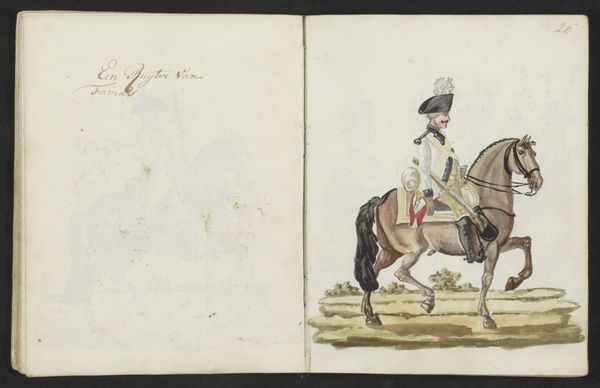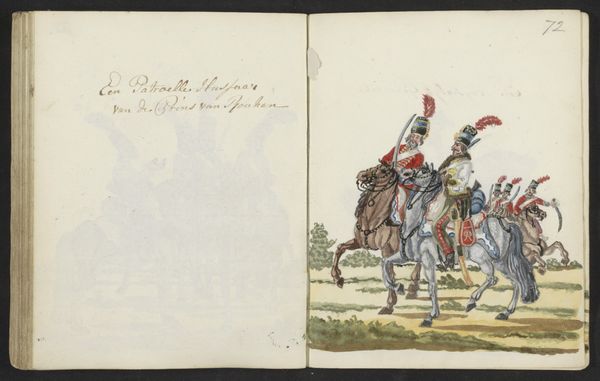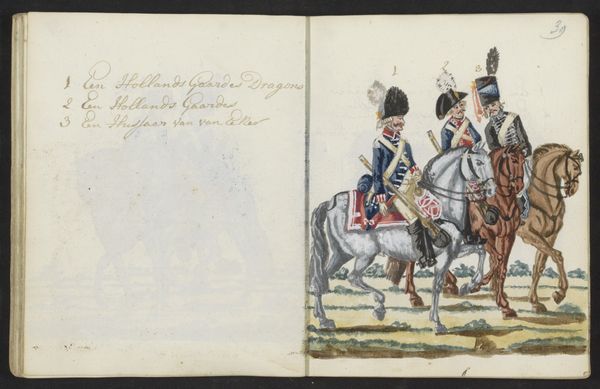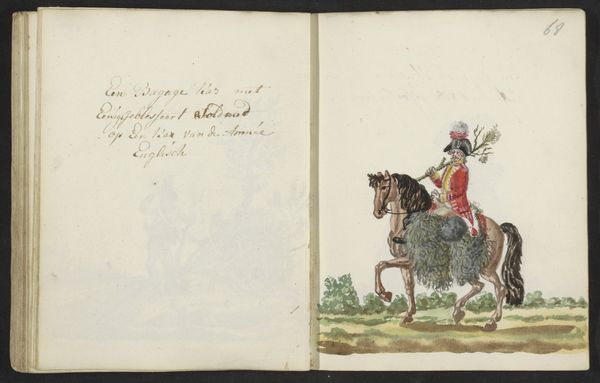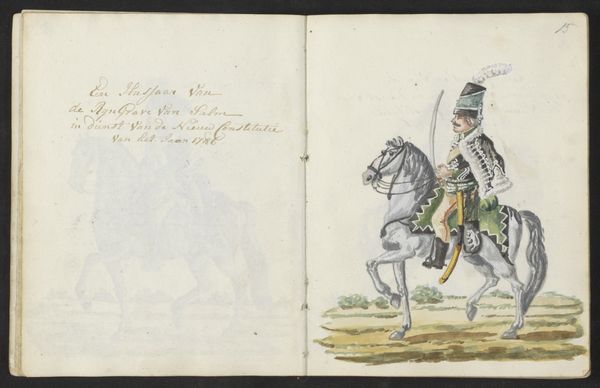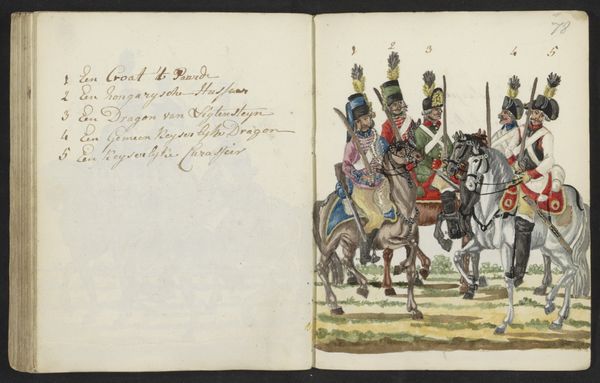
drawing, watercolor, pencil
#
portrait
#
drawing
#
figuration
#
watercolor
#
coloured pencil
#
romanticism
#
pencil
#
history-painting
Dimensions: height 197 mm, width 310 mm
Copyright: Rijks Museum: Open Domain
Curator: At first glance, the two horsemen seem frozen mid-stride, as though the artist, S.G. Casten, sought to immortalize these symbols of authority on the page. Editor: It feels melancholic. On the left-hand page, a spectral mirror image looms behind calligraphic text, while the men and steeds on the right carry themselves with severe rigidity. There is a profound absence lurking here. Curator: Yes, I sense it too. What you’re interpreting as absence I experience more as preservation. The uniforms denote a visual representation of power; observe how each minute embellishment might embody particular values tied to identity. Note how meticulously each stripe, plume, and button has been articulated in watercolor. Editor: Those uniforms are meant to inspire both respect and fear. Considering this drawing was executed in 1795–96, during a period of immense social upheaval across Europe, the precision seems less about timeless preservation, and more about an anxiety to rigidly codify a crumbling social order. The ghosting to the left? Perhaps revolution looming? Curator: Perhaps! I do find that, within its formal restraint, a more romantic sensibility comes through. Consider, for example, the symbolism that the horses provide – embodying both power and freedom within these very formal compositions. They appear restless even, which speaks volumes about the romantic era. Editor: Power and freedom… for whom, though? The hollowness in those phantom riders on the facing page suggests an emptiness beneath the shiny armor of romantic idealism. Who benefits and who is marginalized by the spectacle? This history painting, however delicately rendered, begs questions about the relationship between representation and systemic inequity. Curator: These guards – these gatekeepers – exist still as potent archetypes, and they evoke very old cultural memories of hierarchy, loyalty, and tradition. Regardless of who wears them and why. Editor: Yes, seeing this drawing has reminded me how vital it is to confront inherited histories of power, questioning those symbols we often accept without scrutiny. It gives us pause to think about how we understand legacy in contemporary times. Curator: Ultimately, this is why studying images—however subtle, spectral or overt—remains critically important, for in these images the iconography remains as a symbol over time.
Comments
No comments
Be the first to comment and join the conversation on the ultimate creative platform.
